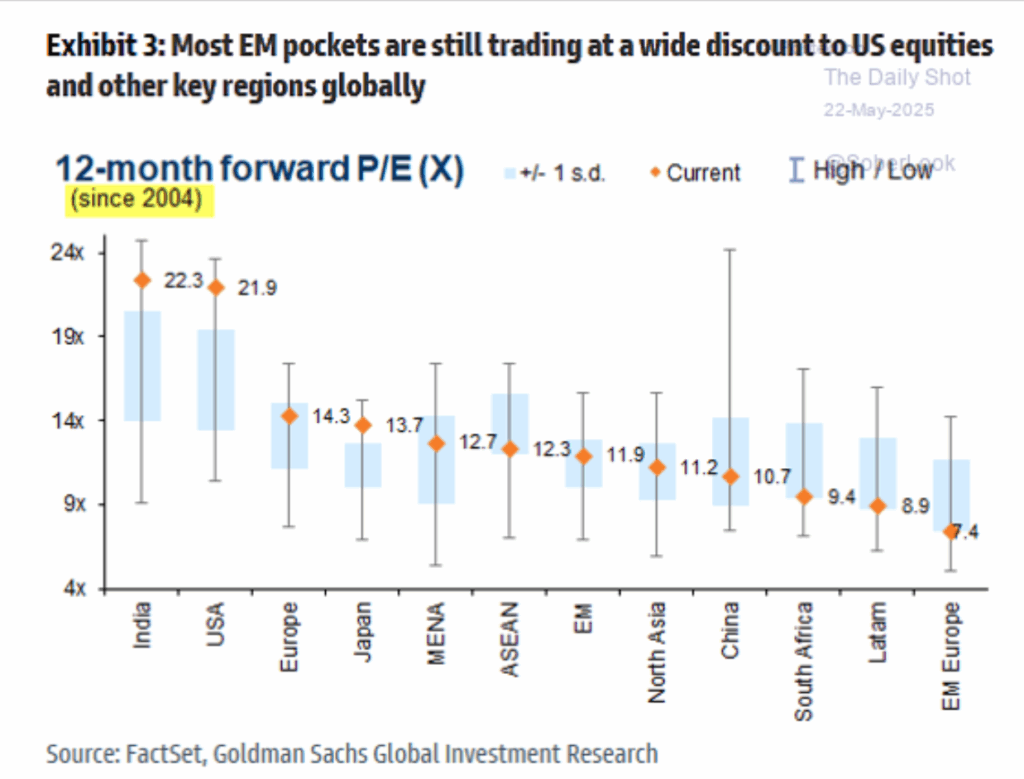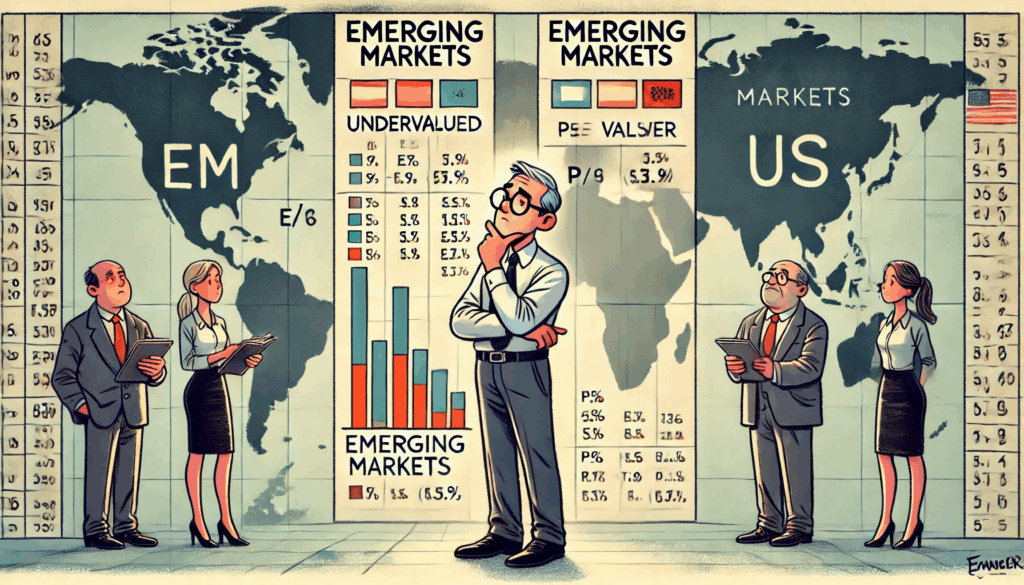India at the Top, But at a Cost
Emerging markets are currently trading at a significantly lower valuation compared to U.S. equities. A recent chart from Goldman Sachs highlights the 12-month forward price-to-earnings (P/E) ratios across different global regions, offering insights into how various markets are valued and where potential opportunities exist.

Among these markets, India stands out with a forward P/E ratio of 22.3, slightly higher than the U.S. ratio of 21.9. This positions India and the U.S. well ahead of the rest of the world. In contrast, Europe, Japan, and other Asian nations are trading at much lower valuations—14, 13, and 12.3 times earnings, respectively. Emerging markets as a whole are even lower, with a P/E ratio of 11.9.
A Significant Valuation Gap
This creates a substantial valuation gap. Countries such as China, South Africa, and regions throughout North Asia and Latin America are priced significantly below India and the U.S. This disparity indicates that investors expect India to achieve high growth and strong earnings in the future. However, sustaining such high valuations is always challenging.
What India Needs to Stay on Top
For India to maintain its premium valuation, it must continue to excel in two key areas: growth and liquidity. High expectations must be supported by actual performance and a consistent inflow of capital. If this support falters, the valuation gap could tighten—and potentially to India’s detriment.
The Global Capital Flow Challenge
There are numerous attractive investment options worldwide. If these markets begin to show signs of recovery, they may attract more capital. In that scenario, India would need to demonstrate even stronger growth to sustain its current position. It’s a delicate balance, and the upcoming quarters will be crucial.
The Bottom Line
While emerging markets may appear cheap, that does not guarantee returns. Meanwhile, India’s premium valuation carries its own risks. The key is to monitor whether the growth narrative holds and whether capital continues to flow in.
Do you think India can maintain this premium position in the long run? Share your views in the comments below! And if you found this article helpful, don’t forget to SHARE it with your friends!










